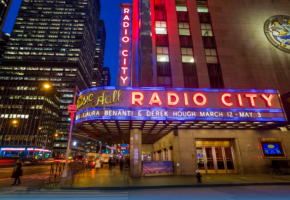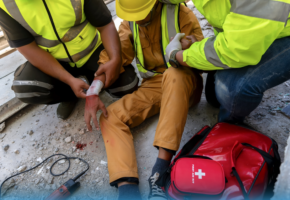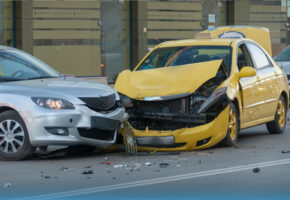Trucks deliver most of the goods that New Yorkers rely on using a complex truck route system. But there are increasing calls to redesign that system because of the truck traffic—and truck accidents—it brings to residential areas. In April 2023, there were nearly 600 accidents citywide involving large commercial vehicles.
Crashes between trucks and pedestrians and cyclists along truck routes are a particular area of safety concern. Recently proposed City Council legislation and a “micro delivery hub” pilot program for deliveries are among the solutions aimed at addressing truck traffic in New York City.
New York City’s Trucking Problem
A May 2021 report, “Delivering New York: A Smart Truck Management Plan for New York City,” outlines how trucks, while essential to the local economy, cause problems in the nation’s largest and most densely developed urban area.
Trucks and Freight Delivery
Around 200 million tons of freight move into and out of the five boroughs every year. The trucking industry is the backbone of New York’s freight movement, responsible for delivering nearly 90% of these goods.
More than 120,000 commercial trucks enter and exit New York City every day, and that number is increasing. Between 2015 – 2018 overall traffic volume in NYC grew by 12% but truck traffic volume grew by 21%. By 2045, the City is expected to move nearly 70% more freight by truck, resulting in an additional 75,000 daily truck trips on an already-constrained transport network.
Ecommerce and Growing Truck Congestion
The rise of ecommerce is a major driver of increased freight volumes. Residential shipping has surpassed shipping to businesses during recent years and skyrocketed during the pandemic.
Streetsblog NYC reports that more than 80% of New Yorkers receive at least one package per week and 18% receive packages at least four days per week. The growth of package deliveries has led to the proliferation of so-called “last-mile” facilities, where large trucks drop off merchandise that is then delivered by other vehicles to customers’ doorsteps.
NYC Truck Accidents
In addition to contributing to congestion on City streets, trucks pose a safety hazard, especially for the most vulnerable road users.
According to DOT data cited in the report, between 2003 and 2016, trucks were involved in 6% of all NYC crashes and accounted for 5% of all crashes resulting in deaths or serious injuries.
Given the amount of truck traffic in New York City, these numbers do not show a huge overall safety hazard. But crashes between trucks and pedestrians and cyclists are more of a trouble spot.
- From 2003 – 2016, about 40% of accidents between trucks and pedestrians resulted in death or serious injury.
- Over the same period, about 30% of truck-involved cyclist crashes resulted in death or serious injury.
- Sixty-nine percent of these accidents occurred on a designated truck route.
From 2019 – 2022, 50% of fatal bike and pedestrian crashes happened on truck routes, even though they make up just 13% of City roads, says Streetsblog.
NYPD crash report data show that, in April 2023, there were 587 accidents involving a large commercial vehicle, or about 8% of all motor vehicle collisions citywide. Most of these truck crashes occurred in Brooklyn (220), Queens (140), and Manhattan (123).
Manhattan has the highest density of NYC truck routes and the Bronx has the second highest density. In these boroughs, over 70 percent and 55 percent, respectively, of fatal pedestrian and bicycle crashes occur on truck routes.
Actions to Combat Truck Route Crashes
New York City’s truck route system comprises around 1,000 miles of designated roadway. Although minor changes were made to the system over the last decade, it has remained largely unaltered since the 1970s.
Some New Yorkers, including Council Member Alexa Aviles, say it’s time for a change. Aviles has introduced a bill that would force the NYC DOT to perform a complete overhaul of the current truck route map. She called for a crackdown on last-mile logistics facilities in an April speech, saying in the communities she represents, they are “flooding our streets with a massive uptick of traffic and air pollution.”
DOT will attempt to solve the dilemma of last-mile facilities through a pilot program set to launch this summer. The program will set aside up to 20 “micro-delivery hubs” across the city. These new hubs are designated curbside and off-street spots for truckers to unload packages. The distribution management plan, based on similar programs in cities like Philadelphia, Seattle, London, and Paris, is set to roll out over three years and two phases.
Get a Free Case Review From a New York Truck Accident Lawyer
New Yorkers have little choice but to share the road with large commercial trucks that can weigh tens of thousands of pounds, have large blind spots, and are difficult to maneuver on crowded city streets. Pedestrians and cyclists face the greatest risks from big trucks, but even if you’re in a passenger vehicle, you are more likely than not to come out on the losing end of a collision with one of these behemoths.
If you were hurt in a NYC truck accident in Manhattan, Queens, Brooklyn, the Bronx, Staten Island, or Long Island, the Sanders Law Firm has you covered. We fund all the costs of investigating, negotiating, and litigating a trucking accident claim, and if we do not recover money for you, you owe us nothing.
Call (855) SANDERS or contact us for a free case review.




